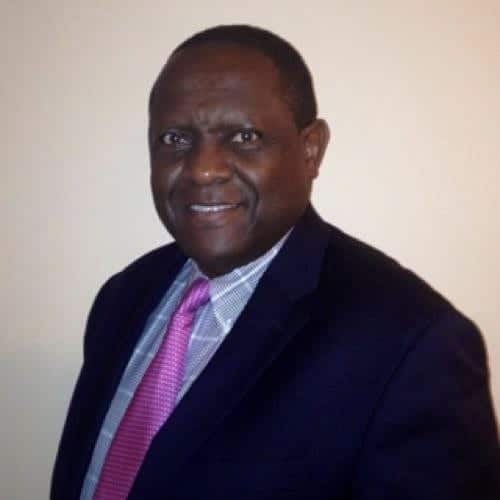
Anthropology sources say that Turkana is the cradle of mankind based on fossils collected from the area. Lake Turkana is 300km long and 50km wide. It has a depth of 358 feet – making it the the deepest lake in Kenya. Additionally, it is the largest lake in Kenya (although, Lake Victoria, which is shared with Kenya, Tanzania and Uganda is larger). It is also the world’s largest desert lake. Finally, the water in the lake is potable but not very palatable.
Turkana Fishermen’s Co-operative Society Limited (TFCS) was formed in the 1970s to market fish from the lake, raise incomes and uplift the welfare of the Turkana people. However, because of the perishability of fish, cold storage facilities were essential if the fish was to reach its market in good condition. However, sun-dried Nile perch, produced to meet the shortfall in fish demand among the Luo around Lake Victoria, does not require refrigeration.
In the 1970s and early 1980s, (TFCS) received colossal amounts of donor funds from NORAD (The Norwegian Agency for Development Cooperation). NORAD is a directorate under the Norwegian Ministry of Foreign Affairs. Its task is to ensure effective foreign aid, with quality assurance and evaluation.
The actual amounts expended in the form of donor funds to TFCS, excluding technical assistance amounts, was over US $2,530,000, of which US $1,320,000 was spent on establishing the Kalokol ice-making, freezing and cold storage plant, including the complex of buildings, offices and workshop.
What is it like fishing in Lake Turkana?
About 90% of the lake’s inflow is from river Omo, which is entirely in Ethiopia and enters the lake at its northern end, creating a swampy delta. The eastern shores are rugged and rocky, with few sheltered bays. The western shore consists of exposed sandy beaches, interrupted by the eight-mile Ferguson’s gulf. The seasonal Turkwell and Kerio rivers enter the lake from the western shores.
Even though there are about 12 fish species commercially exploited from Lake Turkana, tilapias are particularly targeted because of their popularity both in the local Lake Turkana Fishery communities and market destinations in Kenya. Top predators also have tilapia as a key component of their diet. The lake’s crocodile population, one of the largest remaining in Africa, was during a census in the late 1960’s estimated to consume some 2-4,000 metric tons of fish annually of which 90% were tilapias (Graham and Beard 1973).
The Ferguson’s Gulf is designated as a bird sanctuary and aquatic birds, especially pelicans, are considered among the most important predators on tilapia (Balarin 1979). Although there are no quantitative impact studies on Lake Turkana, the presence of thousands of pelicans has been reported in the lake (Kolding 1982) and it has been estimated that a pelican can consume about 0.5 metric tons of tilapia per year (Vareschi 1979). The plentiful Nile perch also has tilapia as one of its principle preys, and estimated consumption rates are 10-14,000 metric tons of tilapia per year (Hopson 1982). Given that tilapias occur mainly in the 5m depth contour of sheltered lagoons around the lake, their contribution to Lake Turkana food system is quite impressive.
The Turkana, although not traditional fishermen, are efficient fishers who, even though they mainly use artisanal craft and gear, are fast learners. They are able to cross the lake to access fishing grounds in the eastern, northern and southern shores. To the extreme north of the lake (beyond Todenyang), at the border between Kenya and Ethiopia, the Merille tribe form the main fishers of the Omo river mouth and delta. The northern shoreline of the lake fluctuates greatly, with the lake being almost entirely in Kenya during low lake levels, and at flooding times a significant part of the lake being located in Ethiopia. Merille fishers therefore often cross the border ‘following the lake’ since the common understanding is that this northern part of the lake is in Ethiopia, and also there are no clear boundary marks. This causes serious conflicts between Turkana and Merille fishers. The conflict situation is exacerbated by traditional beliefs between the two communities, whereby a Merille man is considered to be brave and mature (and hence ready for marriage) if he can prove to have killed a Turkana man. Sporadic attacks of Turkana fishermen in these northern waters have existed for a long period.
Considering that the northern waters are the richest fishing grounds, and that most large fish migrate there to spawn, most fish catches come from there. A resolution of this conflict would therefore greatly help to improve the livelihood of many Lake Turkana fishers.
On the North Eastern shores of the lake, the Dassanach tribe forms the main fishers’ community. The main fishing point in this region is located around Illaret. The Gabra tribe is located to the east of Sibiloi National Park, which extends to the eastern part of Lake Turkana as a marine reserve. The Gabra are not traditional fishers and fishing around Koobi Fora, Allia Bay and Moite is mainly undertaken by Turkana fishers, who easily sail there from Kalokol owing to their close proximities. The regions around Allia Bay and Moite also act as the main fish drying areas for Turkana fishers. There have been several reported incidents of attacks of fishers by surrounding tribes (such as Gabra and Boran). Since these communities are not fishers traditionally, these attacks were not usually over fishing grounds, but rather for theft of food rations in the expedition boats, or from temporary camps set up at the shores by fishers drying their catch.
Despite the odds above TFCS is able to get sufficient quantities of fish from the following centers along the lake: Kalokol, Kataboi, Namadak and Tordenyang. The Ferguson’s Gulf the home of the tilapia was until early 1980 supplying most of the tilapia catch in the area.
With the ice-making plant and cooling facilities at the lake and a fresh market for processed fish in major cities in Kenya, a market for salted fish in Congo and a market for sundried fish around Lake Victoria why did TFCS get into financial problems prior to 1980? Find out what turned around this situation at the end of 1980 by getting a copy of Life Lessons of an Immigrant by John Makilya from www.Amazon.com. Additionally, if you want to know more about the book visit https://johnmakilya.com. However, if you wish to get an autographed copy of the book, please text or call the author at 6176538386.
By John Makilya-Diaspora Messenger Contributor
Let us go fishing in “the cradle of mankind” – Lake Turkana







